One of the most poisonous marine organisms in Hawaiian waters can be found at the surface and on the beach, especially (but not only) along the otherwise protected south shores of Oahu. Surrounded by reefs or wave breaker rock walls, they offer usually perfectly gentle conditions for sunbathing and swimming for families and novices. Unfortunately, those barriers are absolutely useless when it comes to this creature.

Hawaii Marine Life Encounters, Above and Under Water
by Sovidias
Hawaiian marine life is abundant and breathtaking; caution should be exercised though as some of it can take the fun out of a beach day.
Jellyfish
Box Jellyfish influx happens at Waikiki, Ala Moana, Kaimana, Kahala Beach, and Hanauma Bay following the lunar cycle, around every tenth day after full moon, and they stay around for about three days. They are transparent (looking like a small plastic bag) and thus almost impossible to see; their stinging tentacles cause an excruciating burning sensation. Different treatments like vinegar, hot water, or ice cubes are recommended, whatever works to relieve the pain, which can last for days (and nights).
Pushed to shore by the almost always present onshore trade winds, Portuguese Man-o-War bother boogie boarders and swimmers alike on mostly windward beaches, like pristine Waimanalo, Makapuu and Lanikai. The tentacles of those transparent blue jellyfishes can grow to 10 m long and also cause a stinging and burning pain, though allegedly not as painful as the Box Jellyfish sting. To reduce unpleasant jellyfish encounters and have fun in the water, a simple rash guard will do a great job.
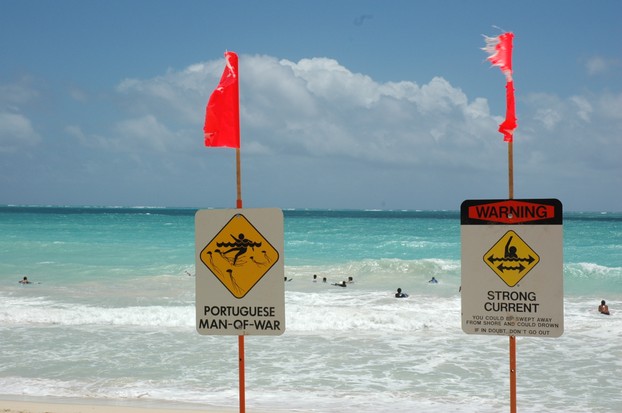 Warning signs posted at Waimanalo Beach All photos by Sovidias |
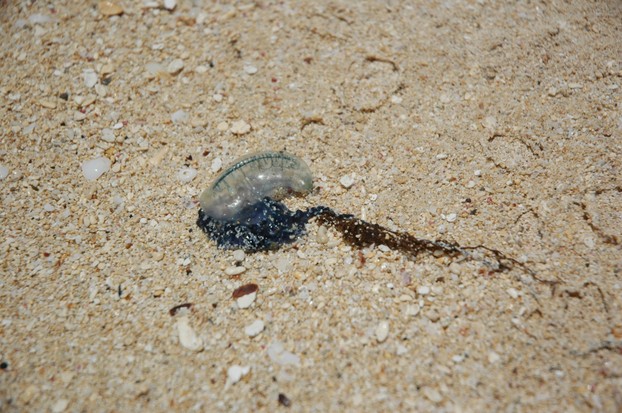 Portuguese Man-o-War |
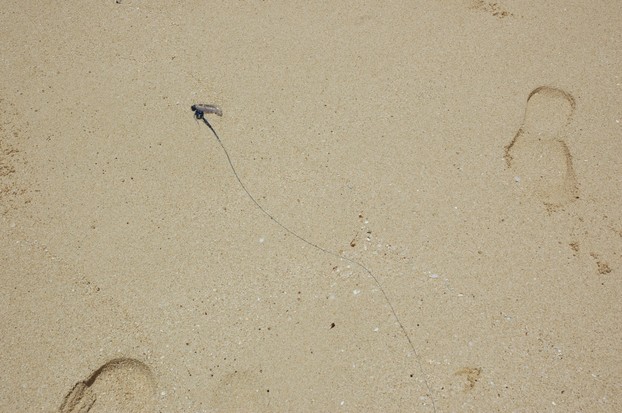 Tentacles usually break off when washed a shore |
Snorkler's Paradise
There is of course a whole list of sea creatures, which are abundant in the warm surrounding waters of the Pacific and you’d rather not get too close to; but unless you are a scuba diver or spear fisher, it is not likely that you even see a barracuda, eel, shark, cone snail, sea snake or the like. One exception I would like to mention might be Hanauma Bay Nature Preserve, THE snorkel destination on Oahu. It is easy to get in the water (once one found parking and watched an obligatory educational video about the do’s and don’ts) and almost no experience is necessary. Almost immediately one finds itself in the middle of tropical fish swarms and other marine life. Some of them have the potential to be a minor threat to distracted snorklers.
 | GoPro HD HERO2: Surf Edition (2011 Model) ***OPEN BOX*** This NEW product you are browsing has been inspected by our certified technicians to ensure that it meets factory specifications. It is guaranteed to be in perfec... Only $239.0 |
 | New Submersible Fish ID Card & Pocket Guide for Scuba Divers, Snorkelers & Fishermen - Marine Inv... Planning an exotic vacation? Wouldn't it be great to have an idea of what marine life you may encounter? If you're the kind of diver, snorkeler or fisherman that wants to know t... Only $12.95 |
 | Hawaii's Fishes : A Guide for Snorkelers and Divers Underwater photographs and informative descriptions of over 240 species, including classification, evolution, and best locations to spot them. |
What's Down?
Crevices and caves offer perfect hiding places for all sorts of moray eels. They are usually nocturnal, though I’ve seen them out also quite a bit during the day. Their mouth is constantly open to let the water circulate, which lets them look a little bit grim. But unless one doesn’t get too close and corner them (accidentally by stepping on corals), they prefer smaller prey.
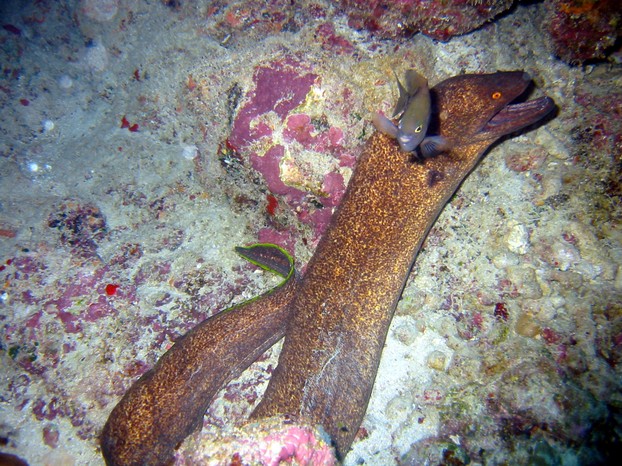 Yellow Margin Moray |
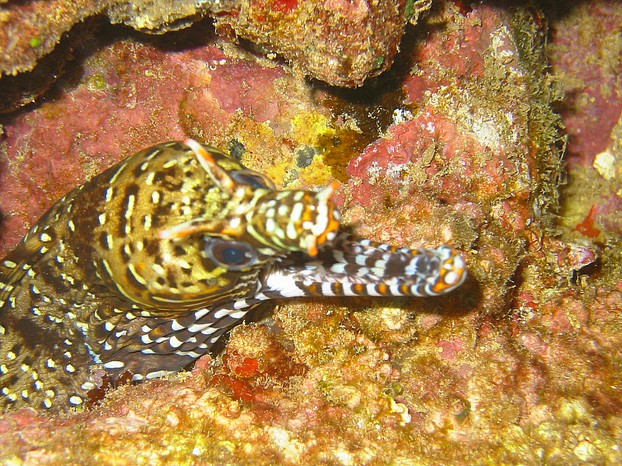 Dragon Eel |
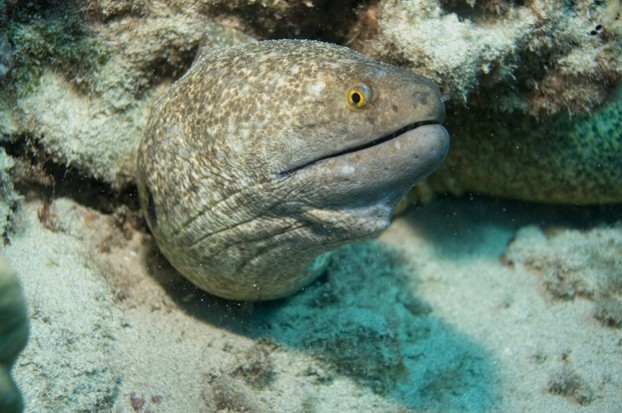 Yellow Margin Moray |
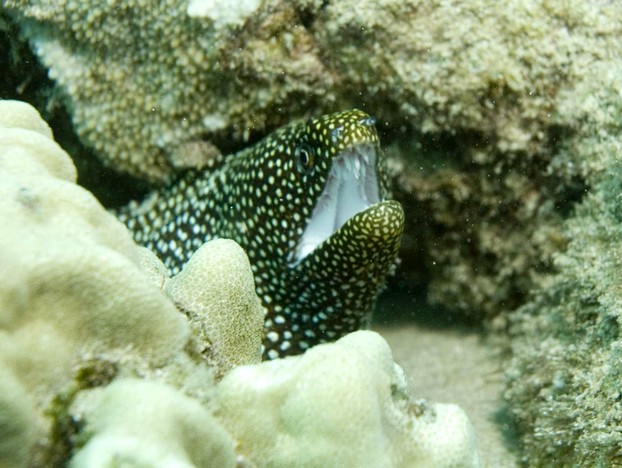 Whitemouth Moray |
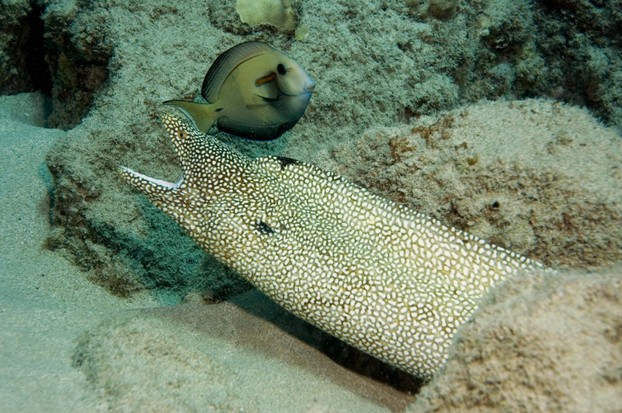 Whitemouth Moray |
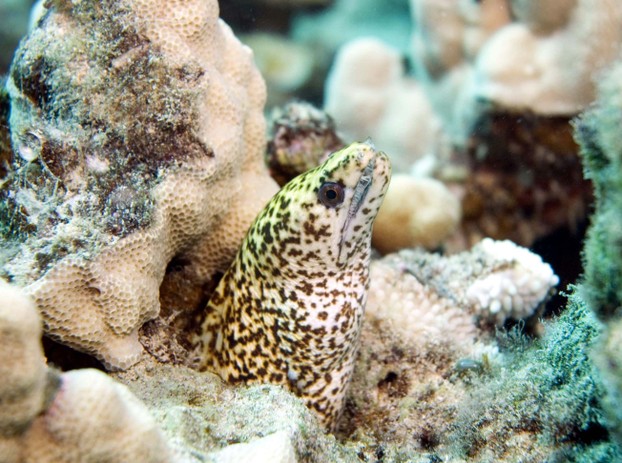 Snowflake Moray |
Sea urchins have a quite painful venom in their poisonous spines and Scorpion fish with their more than perfect camouflage have prickly fins with a venomous mucus; both can easily be overlooked and stepped upon. Reef sharks and barracudas are present in the Bay as well, but there has never been a recorded dangerous encounter in Hanauma Bay. Incidents with Needlefishes are also rare. Their needle like beak and tendency to dart out of the water with a speed of 60 km/h towards bright objects probably pose a greater danger.
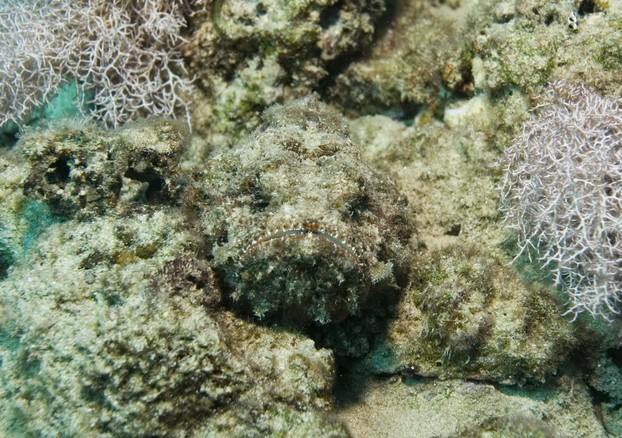 Scorpionfish |
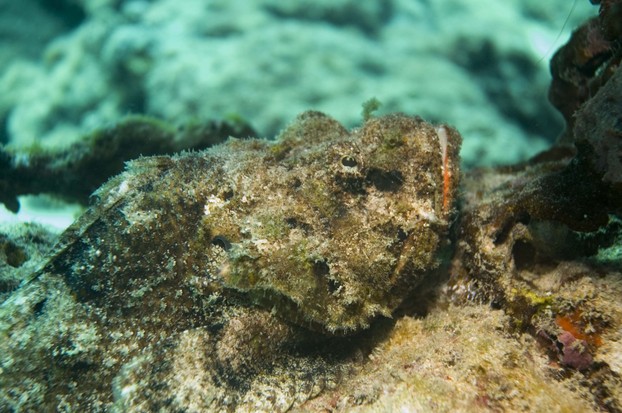 Scorpionfish |
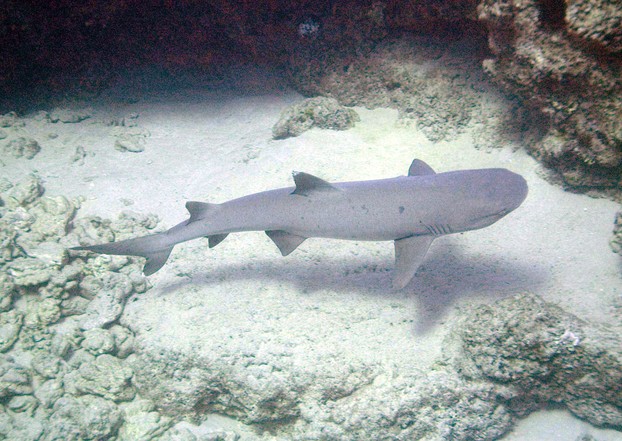 Whitetip Reef Shark, one of the bigger kind |
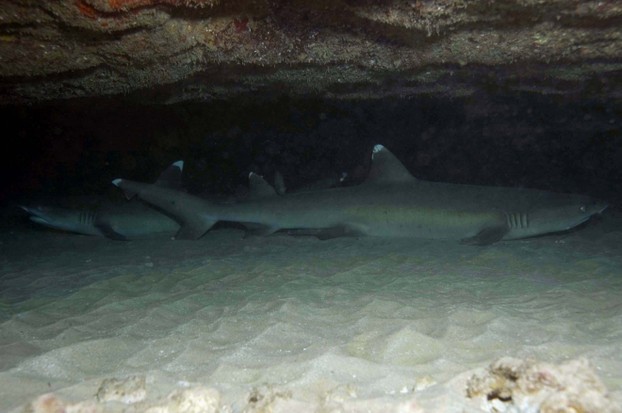 Trying to sleep |
Applying common sense, respecting, and not harassing sea creatures not only protects the marine life, but also prevents personal injuries.
More info about Hawaiian Waters
You might also like
Best Hawaiian Island for HoneymoonHawaii is a great honeymoon spot, but picking an island to vacation on can be...
Largest US Marine Protection AreaPapahānaumokuākea – this is the long name for the remotest and biggest US mar...
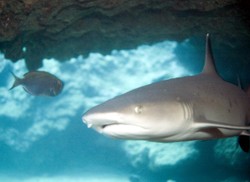

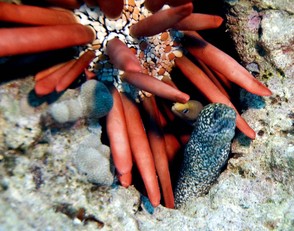
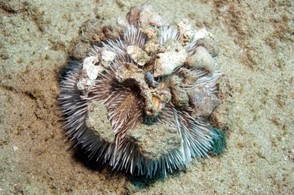
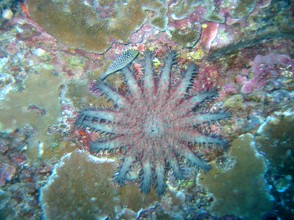
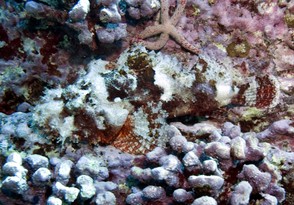
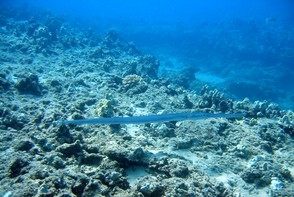
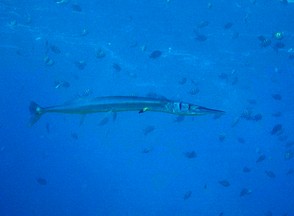

 Festive Meatloafon 07/23/2012
Festive Meatloafon 07/23/2012
 Largest US Marine Protection Areaon 07/15/2012
Largest US Marine Protection Areaon 07/15/2012
 Wild Dolphin Foundation – Experience Spinner Dolphinson 07/06/2012
Wild Dolphin Foundation – Experience Spinner Dolphinson 07/06/2012
 A Summer Camp for Nature Freaks and Much Moreon 06/15/2012
A Summer Camp for Nature Freaks and Much Moreon 06/15/2012

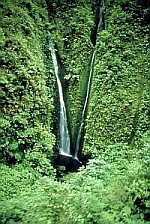
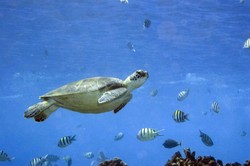
Comments